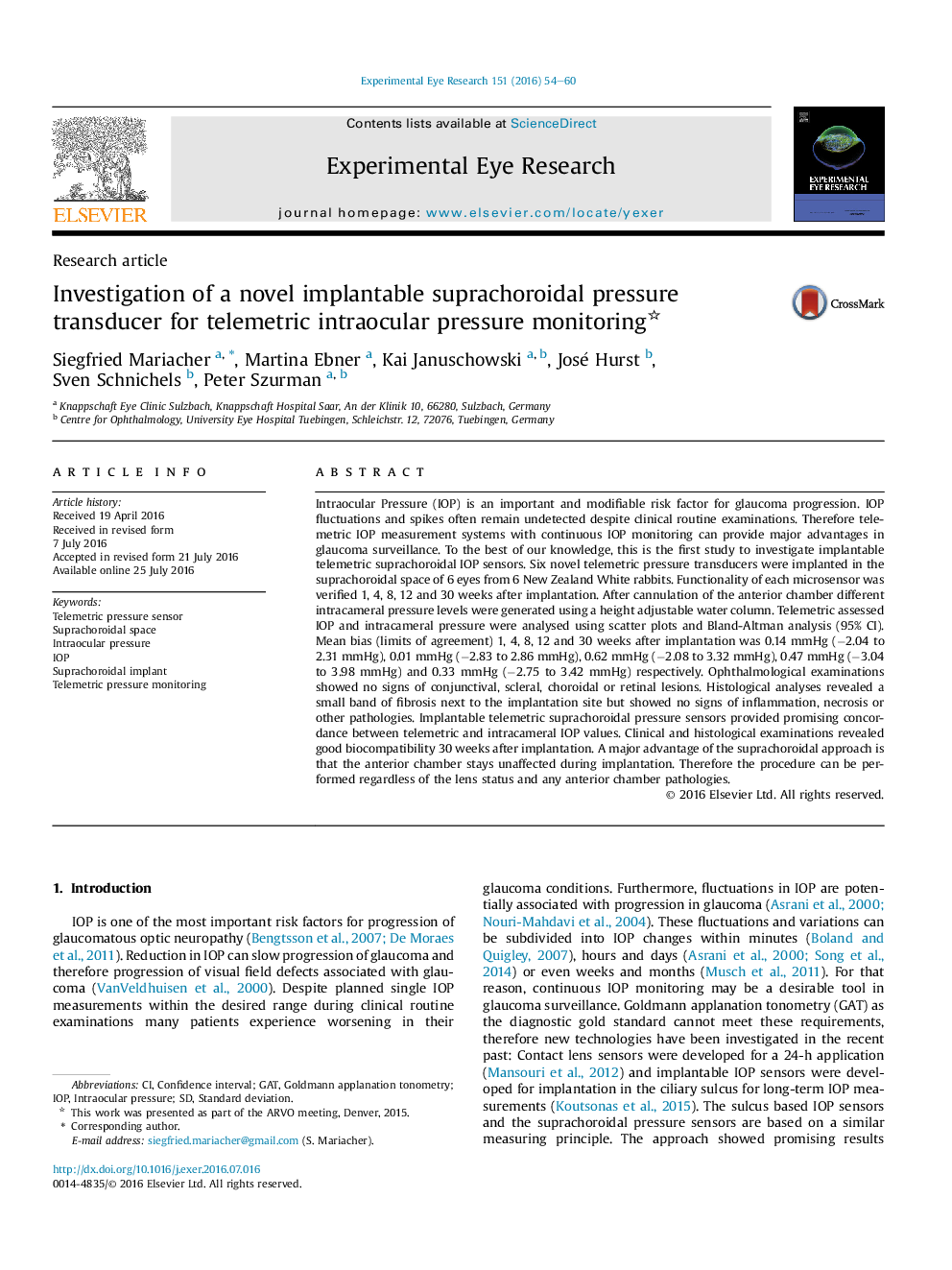| Article ID | Journal | Published Year | Pages | File Type |
|---|---|---|---|---|
| 6196182 | Experimental Eye Research | 2016 | 7 Pages |
â¢Suprachoroidal microsensors are able to measure intraocular pressure almost directly over the vitreous cavity.â¢Histological assessment revealed no signs of necrosis or inflammation but found a small band of fibrosis.â¢The suprachoroidal space is a safe implantation side for insertion of biocompatible implants.â¢Suprachoroidal implantation can be performed independent of the lens status and does not require intracameral surgery.
Intraocular Pressure (IOP) is an important and modifiable risk factor for glaucoma progression. IOP fluctuations and spikes often remain undetected despite clinical routine examinations. Therefore telemetric IOP measurement systems with continuous IOP monitoring can provide major advantages in glaucoma surveillance. To the best of our knowledge, this is the first study to investigate implantable telemetric suprachoroidal IOP sensors. Six novel telemetric pressure transducers were implanted in the suprachoroidal space of 6 eyes from 6 New Zealand White rabbits. Functionality of each microsensor was verified 1, 4, 8, 12 and 30 weeks after implantation. After cannulation of the anterior chamber different intracameral pressure levels were generated using a height adjustable water column. Telemetric assessed IOP and intracameral pressure were analysed using scatter plots and Bland-Altman analysis (95% CI). Mean bias (limits of agreement) 1, 4, 8, 12 and 30 weeks after implantation was 0.14Â mmHg (â2.04 to 2.31Â mmHg), 0.01Â mmHg (â2.83 to 2.86Â mmHg), 0.62Â mmHg (â2.08 to 3.32Â mmHg), 0.47Â mmHg (â3.04 to 3.98Â mmHg) and 0.33Â mmHg (â2.75 to 3.42Â mmHg) respectively. Ophthalmological examinations showed no signs of conjunctival, scleral, choroidal or retinal lesions. Histological analyses revealed a small band of fibrosis next to the implantation site but showed no signs of inflammation, necrosis or other pathologies. Implantable telemetric suprachoroidal pressure sensors provided promising concordance between telemetric and intracameral IOP values. Clinical and histological examinations revealed good biocompatibility 30 weeks after implantation. A major advantage of the suprachoroidal approach is that the anterior chamber stays unaffected during implantation. Therefore the procedure can be performed regardless of the lens status and any anterior chamber pathologies.
